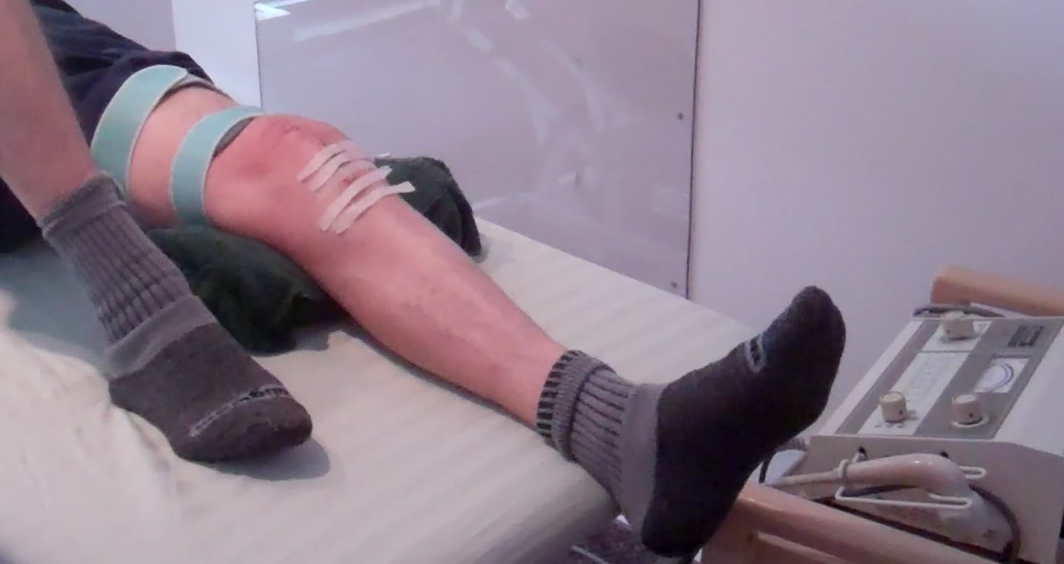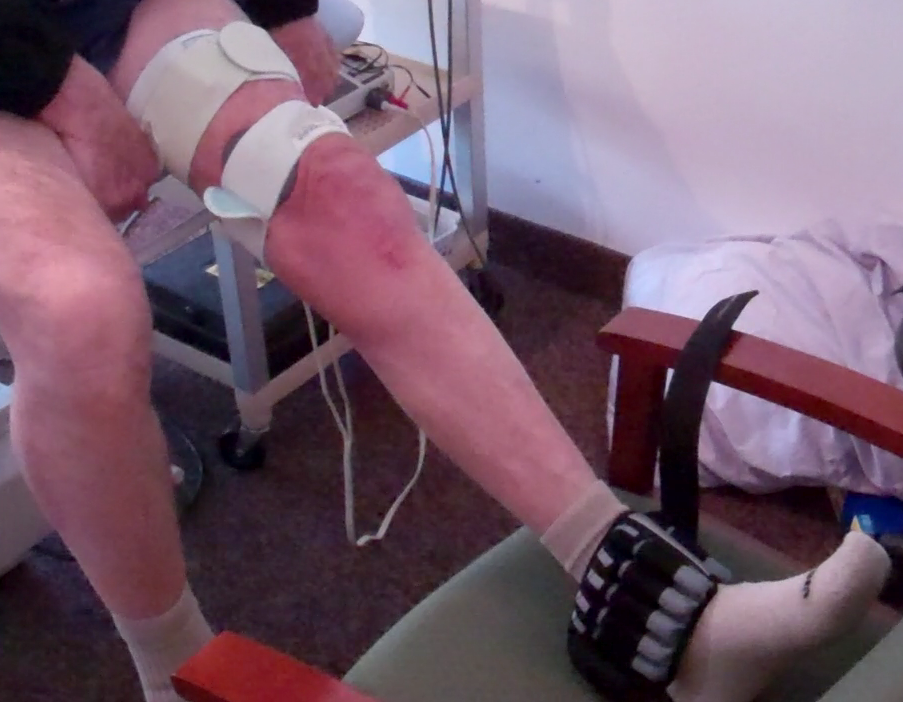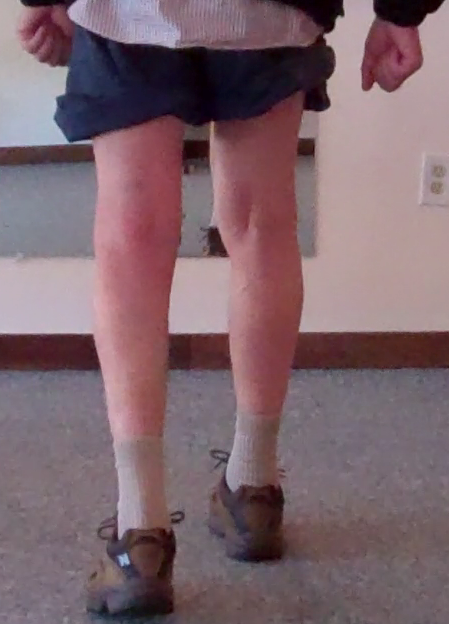Physical therapy after a knee joint replacement is important to ensure full functional recovery for the patient. Rehabilitation programs guided by a knowledgeable physical therapist help ensure that specific milestones are reached after surgery. These milestones include achieving full knee range of motion, restoring and improving muscle strength on both sides of the body, restoring balance and total body biomechanics that occur during walking, stair climbing and other patient specific activities. While most of these milestones are achieved within the first 3-4 months after surgery, the healing and recovery process can continue through the first year. A physical therapist can help the transition process from rehabilitation in a clinic to fitness at a wellness center and/or a home exercise program.
Advance Physical Therapy can help facilitate rehabilitation after a total joint replacement. Below is an example of one client’s physical therapy treatment following a knee replacement surgery; the goal of this progression was to help re-gain flexibility, knee extension range of motion and muscle activity.
Passive stretching for muscles in the back of the leg and knee is important. The Gastrocnemius muscles attach across the back of the knee. This picture (Figure 1) shows the client stretching these muscles by tightening muscles on the top of the thigh and also pulling his toes up towards him, bending the ankle.
Figure 1
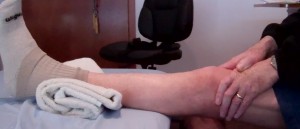
Neuromuscular Re-education is performed early in the rehabilitation process. After surgery, the quadriceps muscles are weakened and inhibited. This loss in muscle function impacts the ability to actively straighten and support the knee during walking. Recent research provides evidence to support using electrical stimulation to help restore the muscle contraction activity; it can also help with the management of swelling after surgery. The client in these pictures is shown receiving this treatment while lying down (Figure 2) and then in a seated position (Figure 3).
Figure 2: Quadriceps muscle neuromuscular re-education lying down
Figure 3: Quadriceps muscle neuromuscular re-education in sitting
Functional muscle training promotes correct and coordinated muscle activity of the foot, ankle, knee and hip to restore efficient movement patterns. The client pictured below is shown practicing shifting their weight up onto the right and left legs, a movement that occurs when we walk or step, (Figure 4). Figure 5, shows the client stepping up onto their surgical leg. This functional rehabilitation activity helps regain knee extension range of motion, muscle activity and balance.
Figure 4: Weight shifting and balance activities for the right and left legs.
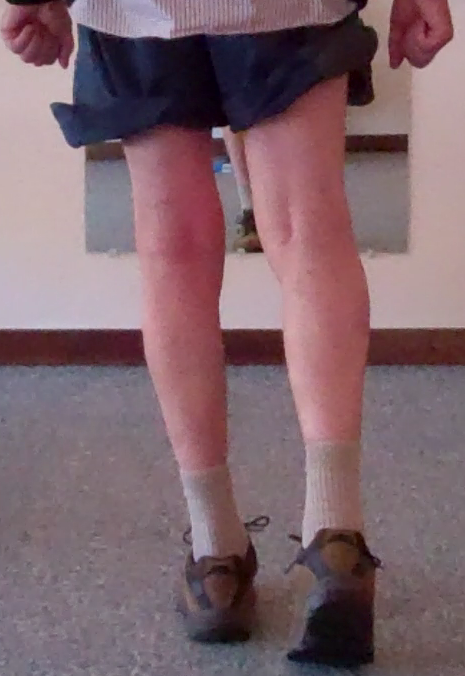 Figure 5: Step up activity onto the left leg to restore active knee and hip extension range of motion and muscle flexibility.
Figure 5: Step up activity onto the left leg to restore active knee and hip extension range of motion and muscle flexibility.
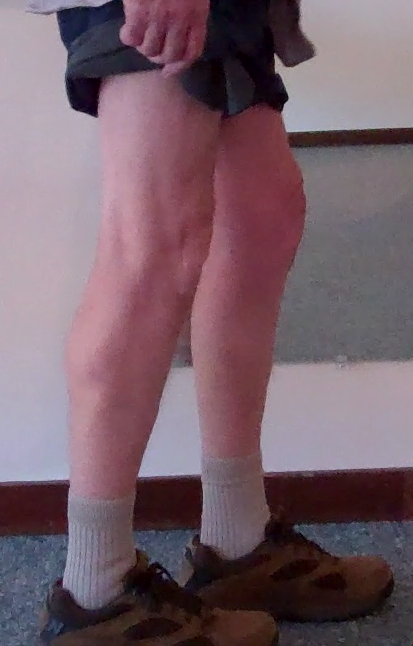
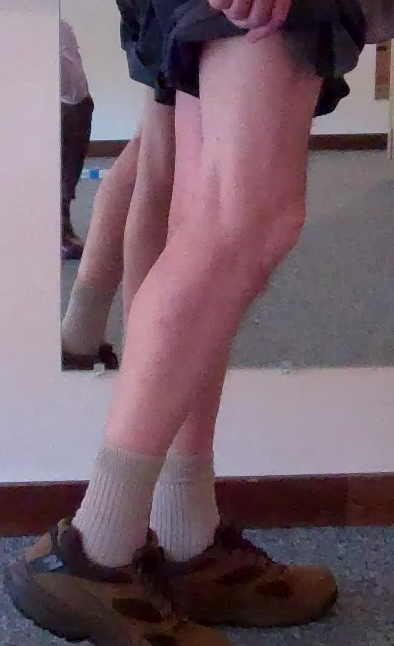 Written by Matthew Harwood PT, DPT, OCS – Physical therapist at Advance Physical Therapy
Written by Matthew Harwood PT, DPT, OCS – Physical therapist at Advance Physical Therapy

